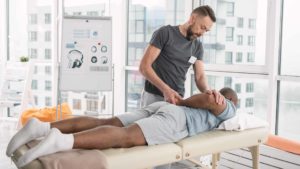
READ HERE
Masterclass: Axial spondyloarthritis for osteopaths and manual therapists.
Macmillan A, Corser A, Clark ZE, McCrum C, Gaffney K. Masterclass: Axial spondyloarthritis for osteopaths and manual therapists. International Journal of Osteopathic Medicine. 2021, Volume 41. https://www.sciencedirect.com/science/article/abs/pii/S1746068921000213
Axial Spondyloarthritis (axial SpA) is an inflammatory arthritis primarily affecting the sacroiliac joints (SIJ) and spine and is a spectrum of disease which includes the more commonly known Ankylosing Spondylitis. Axial SpA is often missed in musculoskeletal assessments, and mismanaged and treated as chronic low back pain. Early diagnosis and intervention are essential to improve outcomes and so it is vital that people presenting with back pain are screened for axial SpA.
This masterclass aims to improve clinicians’ understanding and awareness of axial SpA, including screening, recognition and when to refer to rheumatology. This article will familiarise clinicians with typical clinical features, appropriate investigation and interpretation, referral pathways in line with UK National Institute of Clinical Excellence (NICE) guidelines and advise on best practice for clinicians managing axial SpA.


